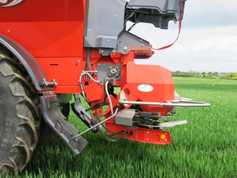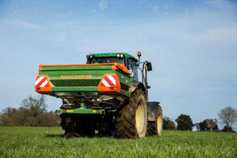On Tuesday last, the Irish Grassland Association held its dairy summer tour on the farms of Henry Walsh and Noel O’Toole in Co Galway. Both farmers have increased herd size dramatically in the past few years in order to maximise the profitability of their farms.
The key message emanating from both farms was simple: maximise production from your existing land block first, and avoid becoming overexposed during expansion.
On both farms, costs were the key. Henry Walsh said: “I am slightly averse to spending capital on housing or the parlour. For me, the most important asset is the land and soil.”
He added that his first port of call when taking on new leased land is to spend money up front on improving the land, reseeding and correcting fertility.
He said: “I have often invested up to €1,000/acre on leased land in the first year, but I feel that the capital input is returned in the first few years.”
There are surplus heifers produced on the Walsh farm every year. In the past, surplus has been sold in-calf. The clear focus has been to ensure there are excess heifers on hand to utilise additional land when it does come up. Cow numbers have increased by about 40 this year as quota restrictions were lifted and the plan is to increase numbers by another 40 to 280 next year.
Noel O’Toole has increased stock numbers from 75 in 2006 to 163 this year. With the current pressure on milk prices, Noel urged farmers to carefully assess their costs before expanding numbers. He said that looking back at the average performance of the farm over the previous five years is essential in highlighting where costs can be trimmed back, but he urged young farmers starting out to be very careful in their budgeting.
If they don’t hit the targets in terms of milk solids production, or if there is a disease outbreak, this can leave them exposed, particularly when milk price is low.
Noel’s farm is stocked at four cows/ha on the milking platform. When asked about how he builds covers in the autumn, he replied: “Some people might find it strange that I will feed some high-quality silage in August so that I have grass to keep cows grazing in October.”
Despite being stocked so heavily, he still only fed 588kg concentrates per cow last year. In terms of cow type, Noel is adamant that he has the right type of cow for the system on his farm. Cow type consists mainly of a New Zealand Friesian/ Jersey cross with the average cow weight at approximately 500kg.
“When I started cross breeding, these little rabbits of calves popped out, but then these heifers calved down, I was sorry I didn’t have more rabbits.”
When questioned further on expansion into the future, the message from the O’Toole farm was clear: “I like to work from cashflow. Any investment I make will be done from cashflow. If the current account is looking tight, then we won’t invest.”
He is currently in the process of adding 4ha to the grazing platform; the plan is to have it reseeded and to join the grazing rotation in the spring. This will allow him to increase cow numbers to about 175. Full report in next week’s Irish Farmers Journal.






 This is a subscriber-only article
This is a subscriber-only article










SHARING OPTIONS: